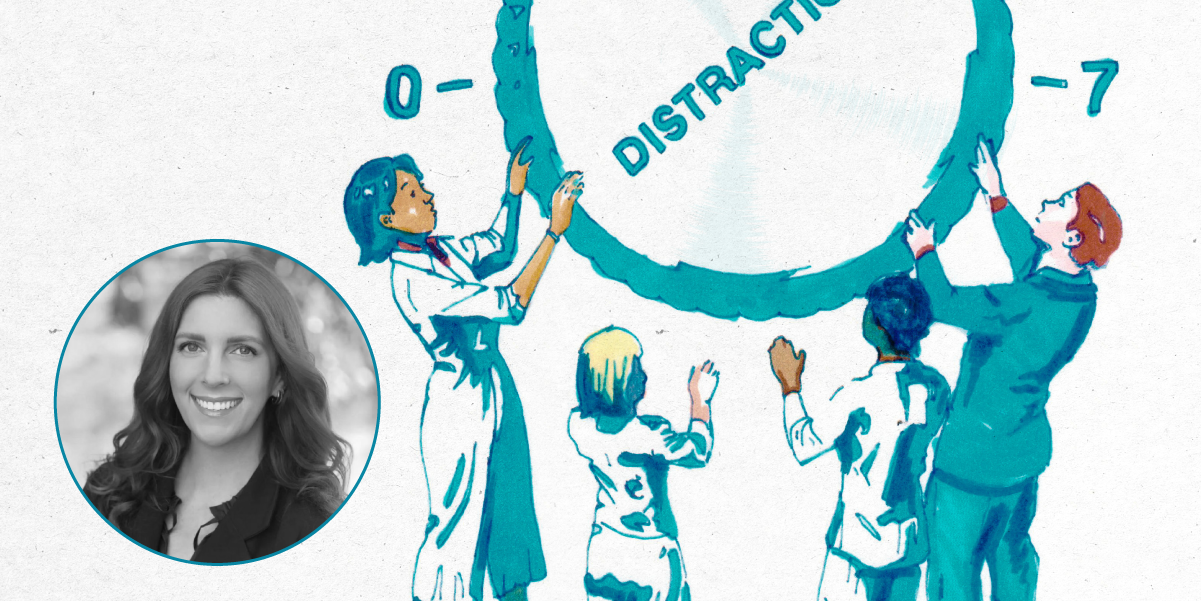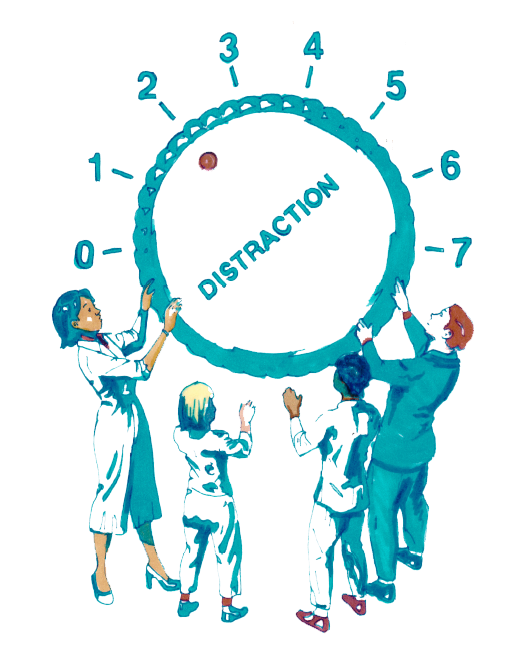Q&A: Dialing Back Distractions
How one California district decided to implement a mobile device ban—and got their families on board

Dialing Back
Distractions
How PR pro Jessica Hull built parent buy-in for phone-free schools


When Executive Director of Communication and Community Engagement Jessica Hull learned that Roseville City School District was considering a ban on mobile devices for students, she knew she had work to do. A seasoned PR pro and immediate past president of the California School Public Relations Association, she realized how important stakeholder buy-in would be for a major change like this. And in this case, there was one group of stakeholders whose support would be absolutely essential: parents. While the K-8 district rolled out this ban for the 2024-25 school year, Hull and her fellow administrators worked well in advance to help families and students understand why the district made this decision and what students would gain from a distraction-free learning environment. They understood that many families had hesitations around not being able to reach their children through their mobile devices—hesitations that were rooted in safety concerns. SchoolCEO sat down with Hull to learn how she and her team ensured the success of the mobile device ban—and how they've partnered with families to build a school environment where everyone feels safe and supported.
Can you explain why and how your administration chose to implement a mobile device ban?
After returning to in-person classes post-pandemic, we noticed that students—especially our middle school students—were very distracted by mobile devices during the school day. They weren't just distracted during classroom time, but also during breaks and lunch. Students were more engaged with their devices than they were with one another.
Like many districts, we had heard from our teachers, staff members and administrators that devices were becoming a behavior issue as well. This was true even at the elementary level with smartwatches. Students were talking to parents, family members or friends during the school day, and that was creating some issues.
In the second half of the 2023-24 school year, we took a deep dive into what solutions were out there and what other school districts in the area were doing. A neighboring district, Folsom-Cordova Unified, had implemented a mobile device ban for their middle schools that school year. Our team did some site visits, and the administrators noticed something so refreshing—that kids were actually talking to one another and playing games during breaks because they weren't attached to their devices.
So we decided to explore a possible device ban more seriously. After further research, we made the decision to go forward with the ban and announce it at the end of the school year so that families had all summer to prepare and ask questions.
How did your community respond to the news of the ban?
The majority of our community welcomed the change wholeheartedly. We first rolled out this announcement to our teachers and staff, and the response was extremely positive. Teachers were relieved they would no longer have to police students on how they could and could not use their devices.
But the biggest piece was acknowledging that this represented a shift from how families were used to interacting with their kids. Families today often have instant access to their children, but that wasn’t true when you and I were growing up. We had to remind them of that and help them see how a different approach could be beneficial to their children.
Once we clarified and answered questions, families were okay. They had time to prepare and understand, and they knew who to ask if they had a specific question or concern. If we got a question more than once, we added it to our online F.A.Q., which became an increasingly valuable resource. Families would even share it with other families if they saw someone asking questions on social media. We also empowered every staff member, from teachers to principals, with these answers so they could provide clarity, too.
How did you build or reaffirm trust with your community in the making of this decision?
I think the key was giving everyone months of time to prepare, ask questions, understand and have their concerns heard. We passed the policy in May, shared it internally and externally later that month, and then shared it again in July and early August. We crafted messaging from the district, site and classroom levels. We had posters around campus and resources online, so everyone was very prepared for what was to come.
We quickly learned what questions to anticipate. Families always wanted to know what the disciplinary policy would be if students did have personal devices, so we built a really clear step-by-step ladder of consequences. But to start, it was just about reminding the students that they were not allowed to have their devices. If needed, we would loop in their families so that everyone was clear on the expectations.
We also wanted to make sure that our policy was crystal clear about every kind of device. At first, we didn't specifically call out devices like smartwatches and wireless earbuds in our communications. After talking to families, though, we added those in all future communications to emphasize that the policy prohibits all mobile devices. We also specified that our ban is bell-to-bell, so there's no devices out at lunch or other common times.
So far, we have seen a lot of positive changes. The main takeaway is—have detailed conversations with your community early on so that their questions are answered ahead of time.
Tell us about your Parent Academies. How do they help build buy-in for new initiatives?
For the past few years, we've held Parent Academies as part of our offerings for families. These events aren't meant to be a place where parents are told what to do, but rather a space for them to learn from experts, including other parents. A lot of families want to know what the norm is in other households and what works for families facing the same challenges they are.
This year, we decided to partner with an organization called SmartSocial, which is all about helping educators and families keep students safe online. The sessions will be a resource for families as they explore how to keep their children safe on social media platforms like TikTok, Fortnite and Roblox. Parents today have a different understanding of technology than they did 10 years ago. But it's also always evolving and changing. Even when you think you're on top of it, here comes this new thing.
And when it comes to digital devices, we're not just talking about children, either. We're also talking about how digital devices impact all of us in a family. We're digging into the research behind how blue light impacts people's sleep patterns and how families can address device addiction, no matter who you are.
As I said earlier, we don't want to tell families what to do. We just want to give them information so they can make the best decisions for themselves and their children. If your family chooses not to use devices at a certain time, we want to help you brainstorm other ways to connect with friends and pass the time.
What hopes do you have for this change as the school year goes on?
Even though we've just started, the response to our new policy has been incredible. Anecdotally, I've heard from teachers and other staff that children are engaging more with one another and that students honestly seem happier. And while we don't have a ton of hard data since it's still so early in the school year, we're seeing some early signs that not having personal devices in school is positively impacting student behavior. For example, at this same time last year, we had over 70 behavior referrals in one of our middle schools. This year, at the same school, we've had fewer than 10. What an enormous difference that makes! How much more learning is happening? How much more fun is being had?
Something that we're quickly learning is that when students aren't distracted by their devices, they need other types of programming to pass the time. Even though we're only at the beginning of the school year, we've already added more structured activities to lunch so that kids have games they can engage in with their friends. My honest hope is that this becomes the norm again for student life—students coming to school to focus on learning and making connections with friends and classmates. After all, these are the reasons we have school.
As we're getting into the school year, many families have reported that it hasn't been as hard as they thought it would be, and I feel the same way. When we researched this policy change, I was so prepared for all of the negative things that could happen, but so far, it's really been fine. I thought it would take until the holidays for this to feel normal, but it already does, less than a month into the school year. I honestly anticipate we'll only have more and more positive results from this decision.
What role do you believe schools play in regulating students' personal device use?
I do think that every school has a responsibility to provide a distraction-free environment, and that means considering what impact cell phones and other devices have on learning. The solution may be different according to your demographics, your school size, a lot of different factors. If your district isn't a one-to-one district and cell phones are used for learning, a ban may not be right for you. I can only report on how this feels in our district and how positive the outcomes have been.
One critical part of our messaging has been focusing not on what students are losing, but rather what they're gaining from having a distraction-free learning environment. When you think about it, childhood is one of the only periods of your life where you can truly have no distractions. In our adult lives, most of us have no choice but to balance all of these devices and responsibilities. Many of us even work regularly on our personal devices. But for our children, we can take steps to give them the blessing of time to learn and grow without distraction.

